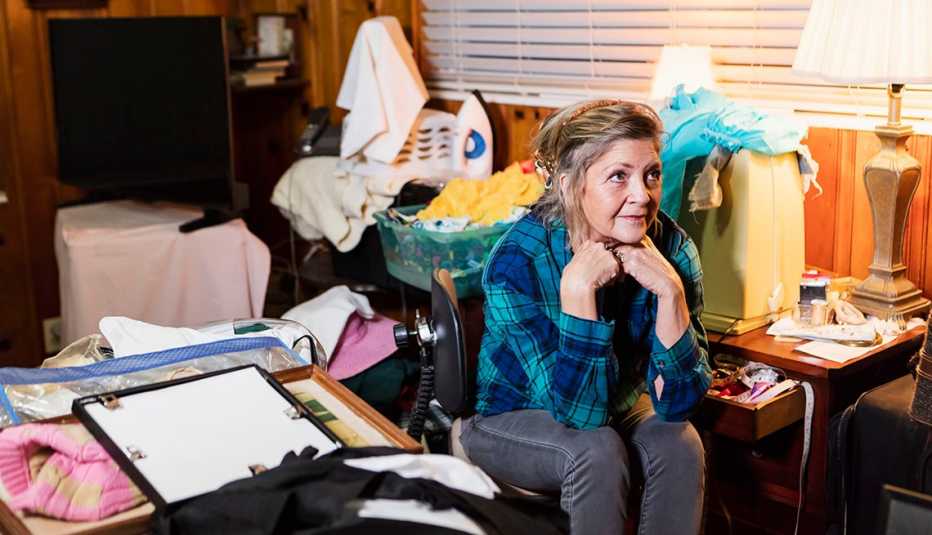Staying Fit


My grandmother and great-grandmother emigrated from Albania 100 years ago. They lived in a cave while waiting for safe passage to America, and arrived on Ellis Island with nothing more than their documents, the clothes on their backs, homemade afghans and lice they picked up on the ship. My grandmother worked every day of her life — through the Great Depression, war, marriage, divorce and single motherhood. She raised my mother to not waste a single thing, fix what was broken and be thrifty. Everything was saved in case of a rainy day.


AARP Membership— $12 for your first year when you sign up for Automatic Renewal
Get instant access to members-only products and hundreds of discounts, a free second membership, and a subscription to AARP the Magazine.
An ‘unfortunate inheritance’
My mom rose above the austere upbringing. Despite the odds, she received a Ph.D. She made a decent living and could afford luxuries her mother had never known. But the “save everything” mentality was ingrained. And when she died — boy, howdy, did I have my work cut out for me to clean out her home. The woman kept everything. She had a spare bedroom full of boxes (some hadn’t been opened since her own mother died). Scads of dry cleaner’s hangers, hundreds of glasses, a thousand restaurant ketchup packets and a closet of stockpiled toiletries. Her home was precisely organized, but it was still a mountain for a grieving daughter to climb. It took four months for me to break it all down, and even then, I put most of the boxes in two storage units. Those took another year to go through and separate into “keep,” “donate” and “why didn’t any of my ancestors throw this away already?!” categories.
I believe my mom’s tidiness and cleanliness kept me from calling her a hoarder. But I also believe that she had more possessions than she could ever need or use, even if she had lived another 10 years. And I know that there was no chance she would ever have decreased the overwhelming amount of stuff in her house. The piles were only likely to grow as time went on. And it all would be destined to become an unfortunate inheritance for me.
Health and safety hazard
In my career working with older adults and the infirmed, I regularly see cases where it’s revealed that the client or a family member is a hoarder. It’s more common than we think and can happen to people of any background. It’s estimated that 3 to 6 percent of the population are hoarders; that’s about 19 million people. Hoarding ranges from an overstuffed home that’s become an issue for the residents to move around in safely to a filthy hovel with trash piled up in the corners and every surface buried. Hoarding at any level can lead to a variety of health risks. A person may be more likely to trip or fall over piled-up belongings; stacks of paperwork or blocked electrical outlets create fire hazards; mold can grow in dark, damp spaces; and the neglect can cause unhygienic conditions for the human and animal residents.

































































More on caregiving
5 Tips for Difficult Family Caregiving Conversations
Before you jump in, do your homework first
Balancing a Loved One's Safety and Dignity
Keep an eye on changing needs, and allow as much independence as possible
How to Make a Home Safe for Your Aging Parent
Small changes — and big ones, too — can be put in place to accommodate your loved one